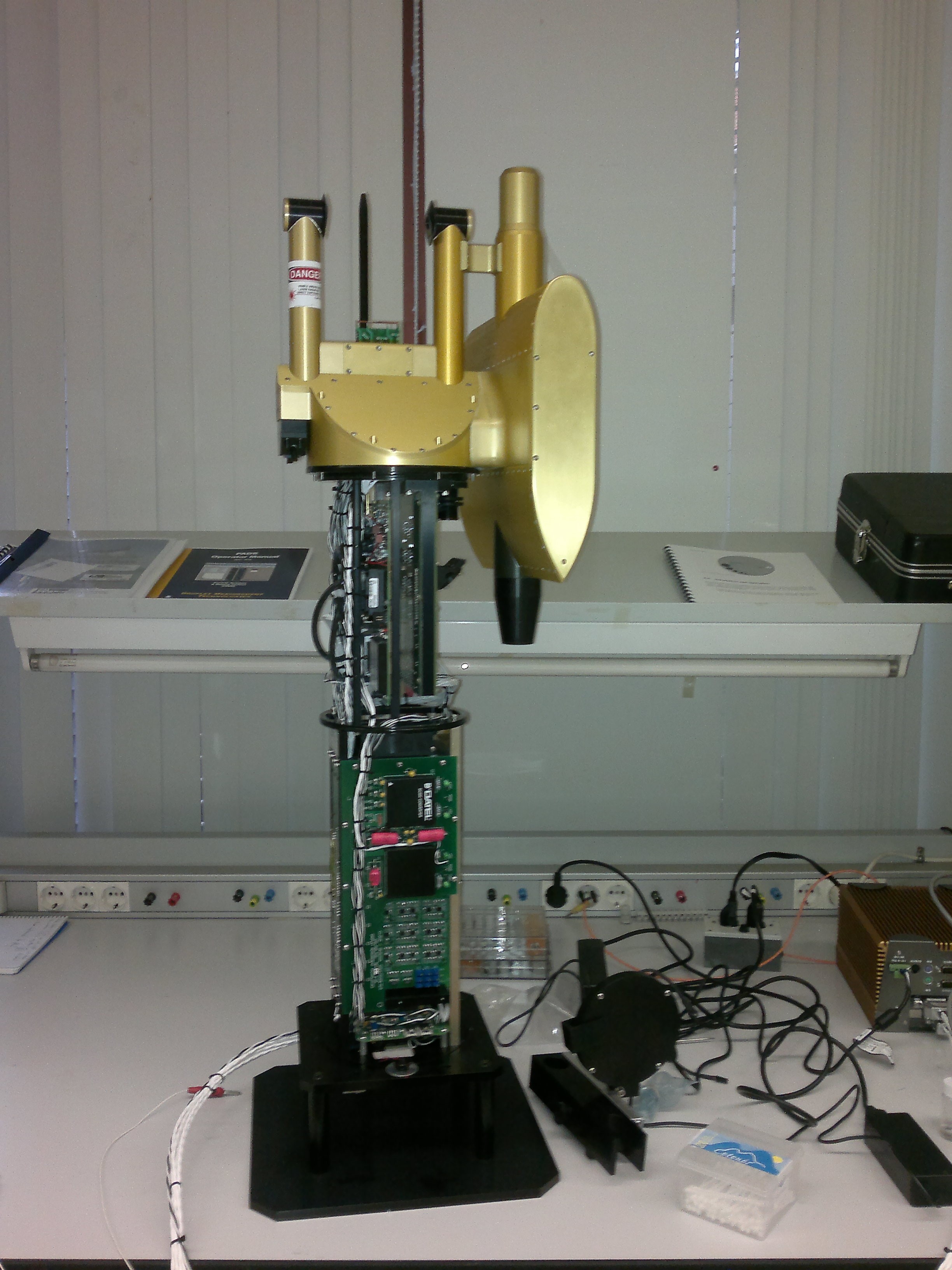Airborne atmospheric research instrumentation

CAPS (Cloud, Aerosol and Precipitation Spectrometer)
This multipurpose particle spectrometer is a set of five instruments packaged into a single integrated measurement system. It provides aerosol particle and cloud hydrometeor size distributions from 0.6 to 50 μm, particle shape (discrimination between water and ice), particle optical properties (refractive index), precipitation size distributions from 15 μm to 930 μm, liquid water content from 0.01 to 3 g/m3, aircraft speed, atmospheric temperature, pressure and relative humidity.
The main sensors integrated in CAPS are:
- CAS (Cloud and Aerosol Spectrometer): It was originally developed as an instrument for airborne studies of aerosol and cloud particle properties. It uses the measurement of light scattered from individual particles to derive the diameter (from 0.6 to 50 μm) assuming sphericity.
- CIP (Cloud Imaging Probe): It uses a fast 64-element photodiode array to generate 2-Dimensional images of particles from 15 to 930 µm, as well as sizing in 1-Dimensional histogram form.
- LWC (Liquid Water Content): This instrument measures the liquid water content from 0.01 to 3 g/m3 using a hot wire sensor.
PCASP 100-X (Passive Cavity Aerosol Spectrometer Probe)
This airborne optical spectrometer measures aerosol particles in the 0.1 to 3 µm range. This instrument is currently in use on research aircraft in more than 20 countries for applications in weather modification, air quality studies and biomass burning research.
FSSP-100-ER (Forward Scattering Spectrometer Probe)
This probe measures the cloud water content, the concentration and size of water droplets from 5 to 95 µm. Particles are sized by measuring the amount of light scattered into the collecting optics aperture during particle interaction through a focused laser beam.
This instrument is used for the study of cloud microphysics, aircraft icing and coarse aerosol measurements.
OAP-2D-GB2 (Optical Array Probe 2D-GB2)
This probe provides the particle size from 100 to 6200 µm by using a linear array of photodiodes to sense the shadowing of array elements by particles passing through its field of view. In addition, it also provides the particle size spectrum and the irregular particle masses. It is used specially for the study of cloud microphysics and precipitable water.
OAP-2D2-C (Optical Array Probe 2D2-C)
This probe provides the particle size from 25 to 800 µm by using a linear array of photodiodes to sense the shadowing of array elements by particles passing through its field of view. In addition, it also provides the particle size spectrum and the irregular particle masses. It is used specially for the study of cloud microphysics and aircraft icing.
Ozone Monitor 2B-Tech
The Ozone Monitor 2B-Tech enables accurate and precise measurement of atmospheric ozone over a wide dynamic range, extending from a limit of detection of 1.5 ppbv to an upper limit of 100 ppmv. Its light weight (2.1 kg), low power consumption (3.6 W), simple operation and fast response time made it suitable for aircraft measurements. Present capabilities include measurements from surface up to 4000 m above sea level. Measurement principle is based on the technique of absorption of UV light at 254 nm.
NO/NO2/NOx Analyser 200EU
Concentration of nitric oxide (NO), nitrogen dioxide (NO2) and total nitrogen oxides (NOx, the sum of NO and NO2) is measured in a sample gas drawn through the instrument. The Model 200EU offers sensitivity ranges of 0-5 ppb to 0-2000 ppb, with a lower detectable limit of 50 ppt, necessary for low level measurements. In general, the sensitivity range is useful for measurements in the urban Planetary Boundary Layer but not for the free troposphere.
The Analyser requires that sample gas be supplied at ambient atmospheric pressure in order to establish a constant gas flow through the reaction cell where the sample gas is exposed to ozone (O3), initiating a chemical reaction that gives off light. The instrument measures the amount of chemiluminescence to determine the amount of NO present in the sample. Besides, a catalytic reactive converter converts NO2 in the sample gas to NO which, along with the NO present in the sample is also determined by chemiluminescence and is reported as NOx. Finally, NO2 is calculated as the difference between NOx and NO.



